AMD Zen 3 Ryzen Deep Dive Review: 5950X, 5900X, 5800X and 5600X Tested
by Dr. Ian Cutress on November 5, 2020 9:01 AM ESTGaming Tests: Borderlands 3
As a big Borderlands fan, having to sit and wait six months for the EPIC Store exclusive to expire before we saw it on Steam felt like a long time to wait. The fourth title of the franchise, if you exclude the TellTale style-games, BL3 expands the universe beyond Pandora and its orbit, with the set of heroes (plus those from previous games) now cruising the galaxy looking for vaults and the treasures within. Popular Characters like Tiny Tina, Claptrap, Lilith, Dr. Zed, Zer0, Tannis, and others all make appearances as the game continues its cel-shaded design but with the graphical fidelity turned up. Borderlands 1 gave me my first ever taste of proper in-game second order PhysX, and it’s a high standard that continues to this day.
BL3 works best with online access, so it is filed under our online games section. BL3 is also one of our biggest downloads, requiring 100+ GB. As BL3 supports resolution scaling, we are using the following settings:
- 360p Very Low, 1440p Very Low, 4K Very Low, 1080p Badass
BL3 has its own in-game benchmark, which recreates a set of on-rails scenes with a variety of activity going on in each, such as shootouts, explosions, and wildlife. The benchmark outputs its own results files, including frame times, which can be parsed for our averages/percentile data.
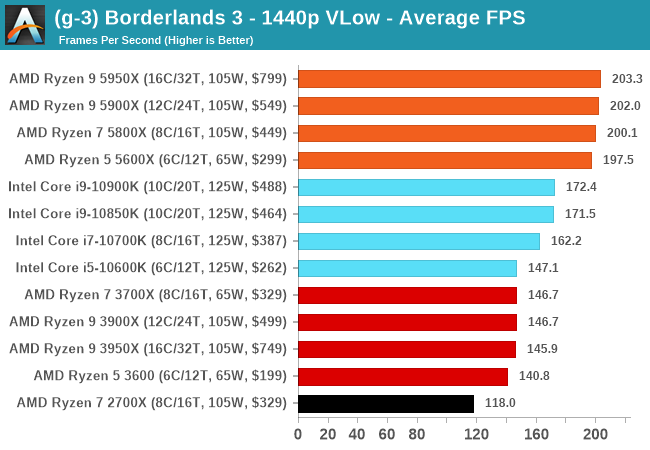
| AnandTech | Low Resolution Low Quality |
Medium Resolution Low Quality |
High Resolution Low Quality |
Medium Resolution Max Quality |
| Average FPS | 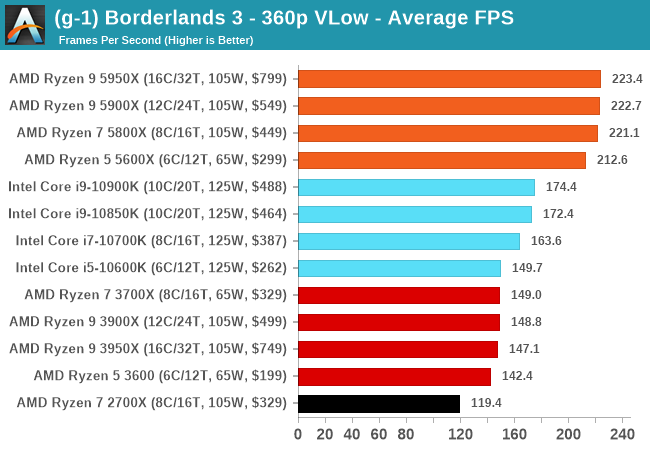 |
 |
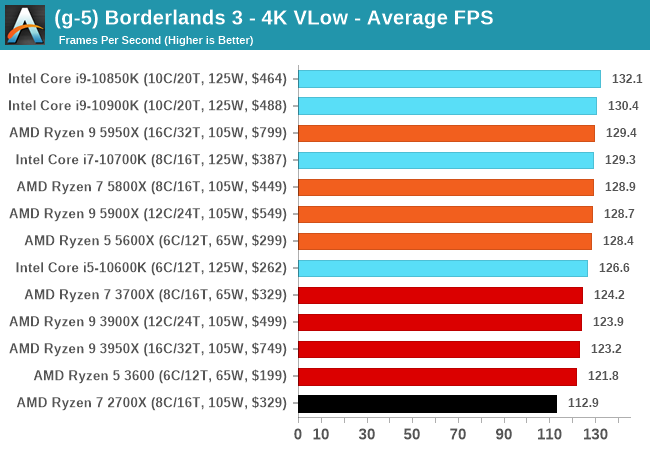 |
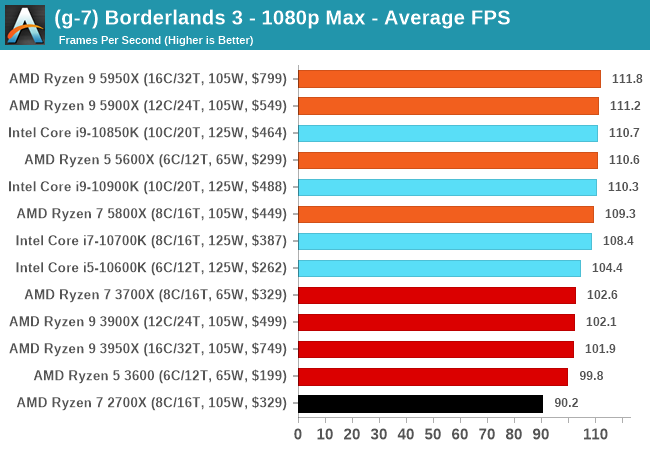 |
| 95th Percentile | 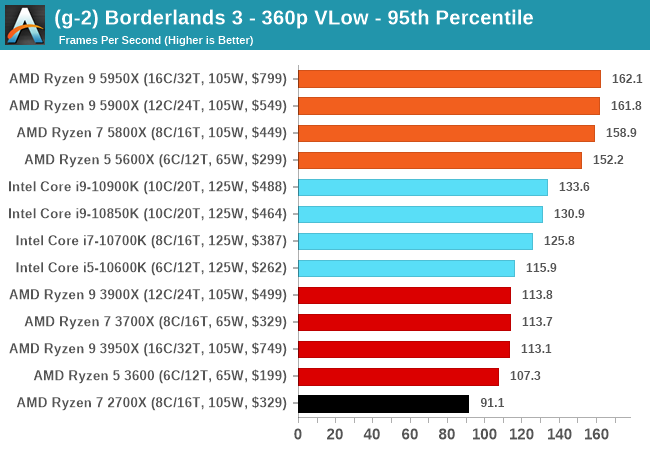 |
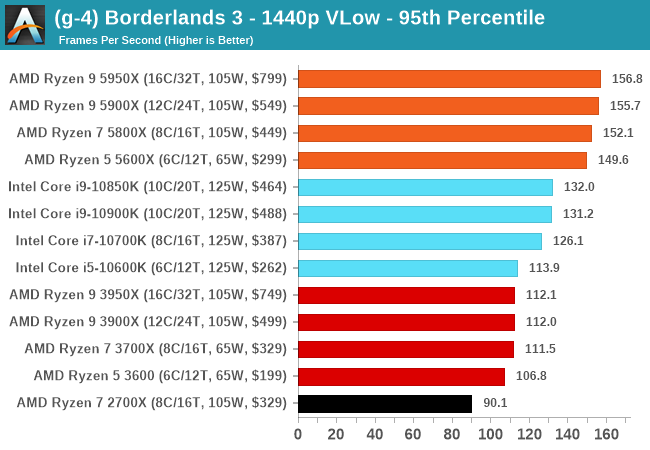 |
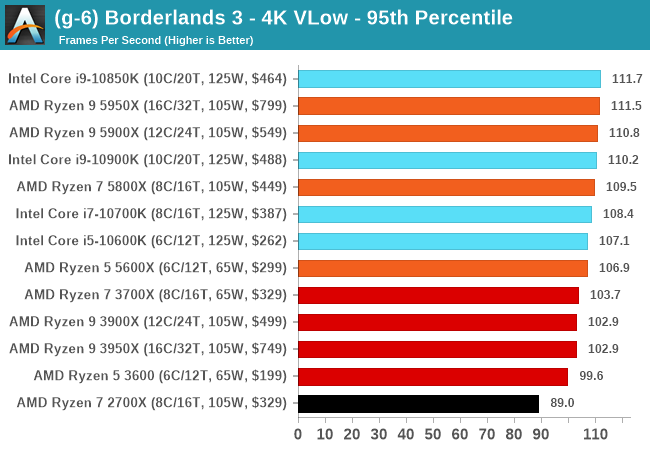 |
 |
All of our benchmark results can also be found in our benchmark engine, Bench.


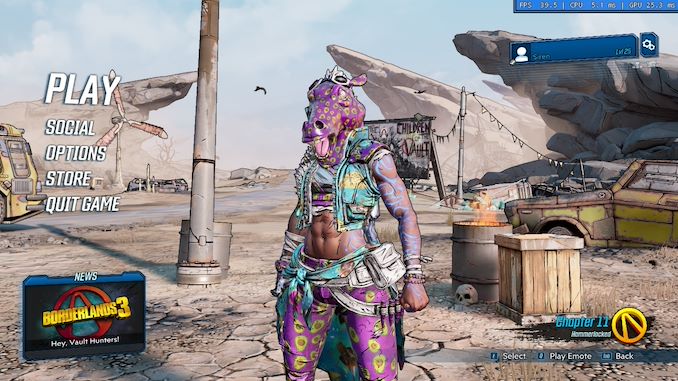








339 Comments
View All Comments
Spunjji - Sunday, November 8, 2020 - link
True, that combo will rockSpunjji - Sunday, November 8, 2020 - link
Why is 100 watts extra power to get that performance suddenly NBD?CrystalCowboy - Thursday, November 5, 2020 - link
If they would die-shrink that I/O chiplet, they might have room for a third CCD...adt6247 - Thursday, November 5, 2020 - link
Then most motherboards would likely have a hard time with power delivery for 8 additional cores.Also, a the IO die only supports 2 CCDs -- doesn't have the lanes for more. Hence the Threadripper parts with 4 CCDs being NUMA devices -- two CCDs with direct access to RAM, and two without.
lmcd - Thursday, November 5, 2020 - link
Also package size constraints have about just as much to do with pin count. Necessary pin count for supporting 2 more CCDs' worth of bandwidth and power (regardless of board's ability to supply it) pushes AMD entirely out of the ITX motherboard market (barring absolutely insane designs that cost $300-400 for minimum features beyond turning on). And any situation using more than 16 cores needs more bandwidth, so the pin count increase -> no ITX is really a no-go.AntonErtl - Thursday, November 5, 2020 - link
The IO die supports 4 CCXs on the 3900X and 3950X. It seems that a CCD does not get a wider port than a CCX (the ports for Zen3 do not seem particularly wide at 16B/cycle in write width), so it may be possible to connect 4 CCDs to the IO die. Whether that will physically fit, or will be too RAM-bandwidth limited is then the question. But given that Intel cannot even match the 16 cores, there is little competetive pressure to put more cores in AM4.schujj07 - Friday, November 6, 2020 - link
Any single socket Zen 2 device is seen as a single NUMA node. When you talk about 1st & 2nd Gen Threadripper, yes they were seen as 2 or 4 NUMA nodes depending on the number of cores due to how the architecture was made.nandnandnand - Thursday, November 5, 2020 - link
Zen 4 core chiplets will be shrunk to 5nm, on a new AM5 socket that could have larger dimensions. And maybe the I/O chiplet will shrink to 7nm at the same time.I expect 3x 8-core chiplets or 2x 12-core chiplets. A graphics chiplet for all desktop models is possible. If so, maybe 12-core chiplets are the way to go.
smilingcrow - Thursday, November 5, 2020 - link
With only dual channel RAM there will be an issue with performance scaling beyond a certain number of cores.It seems as if the sixteen core part already scales poorly with some workloads, so adding fifty percent more is not great.
Leave that for TR.
phoenix_rizzen - Thursday, November 5, 2020 - link
Yeah, it seems like 1 memory channel for every 8 cores is the sweet spot. At least with DDR4 memory controllers.